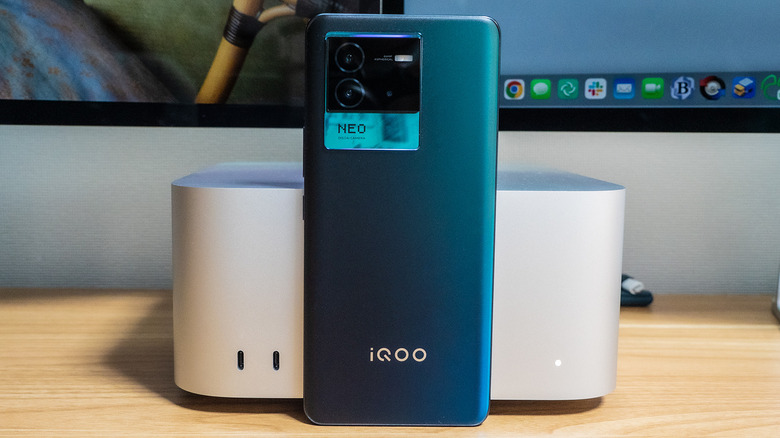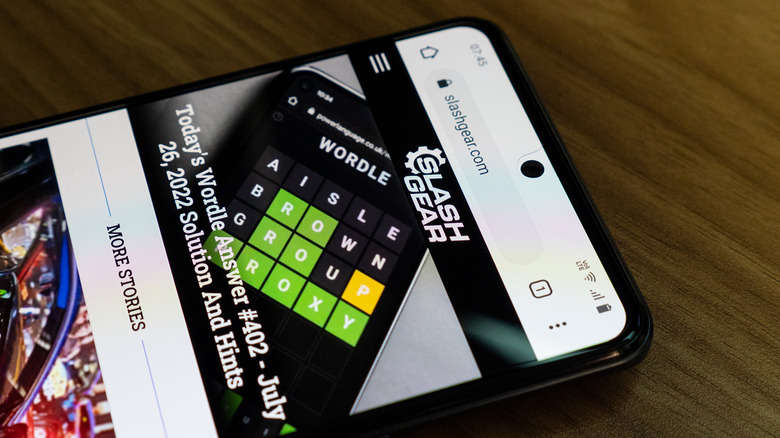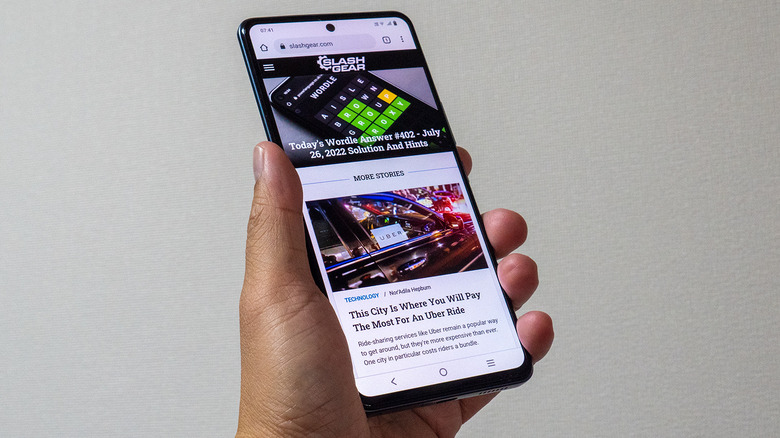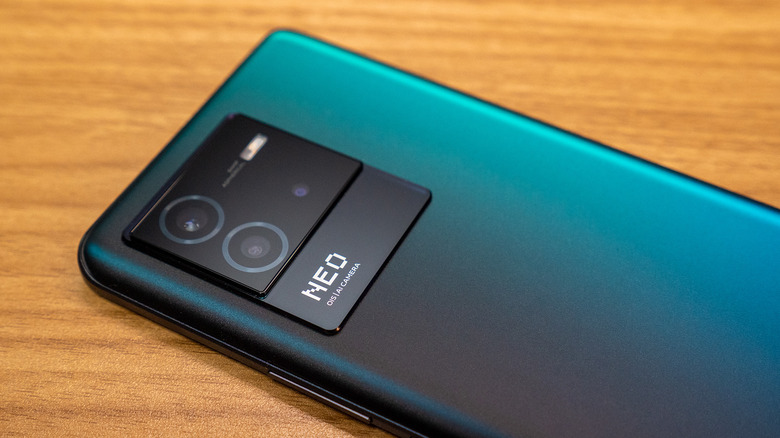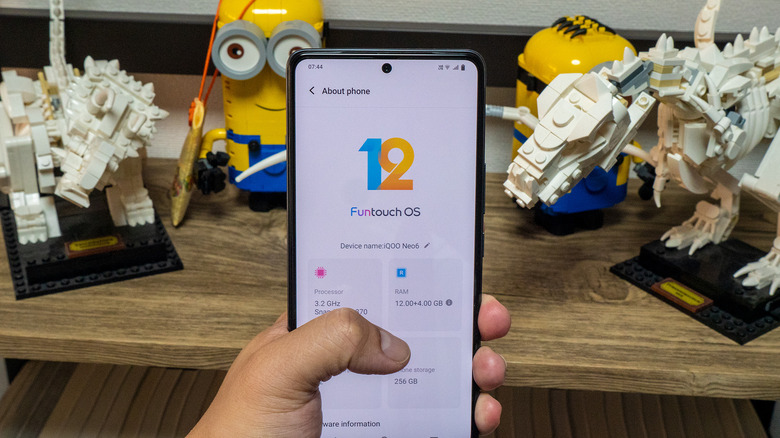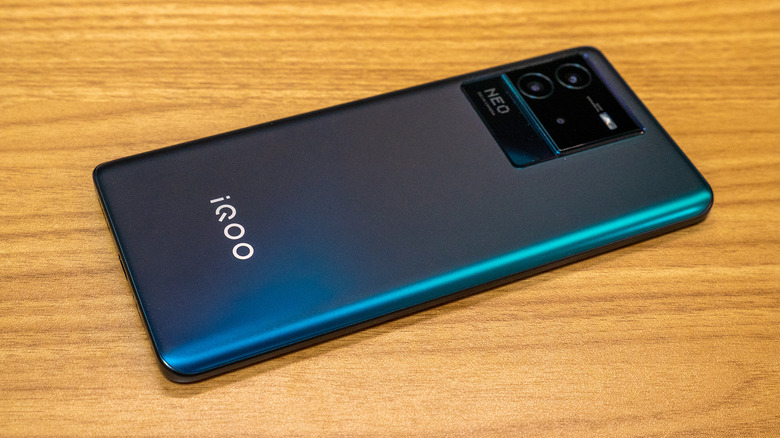iQoo Neo 6 Review: A Decent All-Rounder Phone
- Great performance for its price
- Decent main and ultra-wide cameras
- Fast 80W charging
- No telephoto camera
- No wireless charging
- Unremarkable design
Some will probably say that there's an embarrassment of riches when it comes to smartphone brands and models. Phone brands have sub-brands that try to break into other markets they haven't yet explored. It could be confusing navigating this landscape, especially when smartphones start to sound and look too similar to each other. It's no surprise that every manufacturer tries to come up with a design or feature gimmick to get noticed, which also has the effect of overwhelming buyers. On the flip side, some just deliver a solid performer but might have trouble standing out from the crowd. At first glance, the iQoo Neo 6 from Vivo's sub-brand looks like just another face in the crowd.
The iQoo Neo 6 is as plain as a smartphone can be, which isn't entirely a bad thing. Its design is unobtrusive and modest, but at the same time sleek and stylish, especially with its gradient color options. Its most notable visual feature is the large box that houses the three cameras and LED flash on its back. While not huge or obnoxious, it seems like it's larger than it really should be. Fortunately, it doesn't call attention to itself either, so it can sit nicely there without getting in your way visually.
The design is a bit dated, though, at least compared to many smartphones released this year. The back curves at the edges, and those edges are pretty curved as well. The screen, though, is flat and unadorned save for the punch-hole cutout for the front camera. There are noticeable bezels, too, but they aren't too thick. The back is also made from plastic rather than glass, the first clue to its less than premium stature.
Display and sound
The phone pulls very few punches when it comes to the 6.62-inch AMOLED display. With a resolution of 2400x1080 pixels, it is perfect for videos, especially with support for HDR10+. The screen is really bright, making it usable even outdoors, and its colors pop out to give photos and videos a vibrant look. There are different color modes and temperatures you can choose from if you find things still too muted, or perhaps too saturated instead.
The screen supports refresh rates up to 120Hz, but there are really only two discrete figures you can choose from: either you pick 60Hz or 120Hz, or you let the system decide what to use depending on what's on screen. Staying at 60Hz saves battery life, of course, and some people might not be able to tell the difference anyway. Some games and apps might switch to an in-between 90Hz, though, but that really depends on the title.
Stereo speakers are becoming more common even on mid-range phones like the iQoo Neo 6, and that's definitely a great thing. Of course, not all have actually separate second speakers and simply reuse the earpiece speaker on top. That's the same for this phone, but it might be a big deal for anyone but the most exacting audiophiles. The speakers are loud and, unsurprisingly, start to get distorted at higher volumes. Unfortunately, quality is so-so, and you'll have to switch to your favorite earbuds if you want a better experience, especially at lower volume levels. The phone doesn't have a headphone jack, but Vivo kindly provides a USB-C to 3.5mm adapter that has all but vanished these days.
Performance and battery
It's actually difficult to label the iQoo Neo 6 as a mid-range phone. In many aspects, it should be on par with more expensive flagships, but the somewhat dated Snapdragon 870 drags it down a bit. In reality, however, the phone actually performs better than you might expect given its price tag. The phone is definitely no slouch, handling everything you can throw at it with aplomb, including gaming. Our review unit has 12GB of RAM from the get-go, but you can add 4GB more, in a manner of speaking, thanks to the RAM Expansion feature. Mind, that also deducts 4GB from the 256GB storage, which you can't expand with a microSD card slot.
Benchmark numbers put the model in the same ballpark as last year's flagships, which confirms its premium status, at least if it were launched in 2021. Compared to the current-gen Snapdragon 8 Gen 1, it can barely hold a candle. In real-world use, we found little to complain about as the iQoo Neo 6 performed admirably. Even better, its cooling solution sufficiently kept the phone from throttling too soon, too often, and it didn't get uncomfortably hot even after serious testing and gaming.
The phone has a 4,700 mAh battery that is more than decent by today's standards. It will get you through the day without having to worry about charging it, but its actual battery usage seems to be all over the place, dropping steeply after a few hours even on standby. Fortunately, the most important detail is that it supports fast 80W charging, though you'll have to make sure you're using the provided charger or a compatible brick to take advantage of that. It works as advertised, going from zero to 50% in a little over 10 minutes, and reaching 100% in around 30 minutes. No wireless charging here, of course, and we're waiting for the day when it becomes standard even for mid-range handsets.
Cameras
Despite the large camera island, the iQoo Neo 6 really only has two usable cameras. Fortunately, they're both adequate for everyday needs, but don't expect to win awards with them. The star of the show is a 64MP Samsung ISOCELL GW1 with an f/1.9 aperture lens and optical image stabilization, a rare treat in this tier. As you might have expected, the camera produces images that are crisp, vibrant, and detailed, especially with proper outdoor lighting. Some might actually find the default color settings to be a bit oversaturated, which is on par with phones from this region. Indoors, the camera does falter a bit, but Night mode definitely helps with low-light shots.
Unlike other smartphones of its kind, Vivo used a 16MP sensor for the ultra-wide camera. It shouldn't be a surprise that the output is okay, but not exactly impressive, especially in the amount of detail. The third camera is a measly 2MP macro camera and its novelty wears off quickly. There is no dedicated telephoto camera, so you'll have to make do with the cropped 2x emulated zoom of the 64MP main camera. Unfortunately, its output is definitely nothing to write home about.
There's another 16MP camera on the front, and it's pretty good for selfies. Portrait mode or bokeh is pretty decent, with a clear separation of foreground and background and a pleasing blur in between. The one catch is that the camera app, by default, is set to do a lot of AI-powered beautification, which is still in high demand in iQoo's target markets. You can turn it off, of course, but the process isn't a single switch that you can simply flip.
Software
As a Vivo sub-brand, iQoo uses the company's FuntouchOS custom Android experience. With FuntouchOS 12, the iQoo Neo 6 joins the Android 12 world, though it might not look like it. It seems that manufacturers are once again diverging from the vanilla Android UX and are implementing more customizations on top. It's a two-edged sword, where desirable features get mixed with bloatware very few probably asked for.
Like MIUI and ColorOS, FuntouchOS is filled to the brim with options to change how a phone looks. Beyond themes, though, the custom Android skin brings admittedly useful features not found on stock Android. That includes, for example, a way to navigate menus with one hand or the ability to choose between different styles of the Recent Apps screen. It's not hard to get lost in the maze of options, so you might want to go exploring a bit to find what you're looking for or use the search option.
The biggest question mark with FuntouchOS, however, is Vivo's commitment to supporting its current and future phones. The company doesn't exactly have the best track record in that sense, and it is still on the old two-year system. That means the iQoo Neo 6 will be upgraded to Android 13 and 14, depending on how you count those two years. It's also promised to receive three years of security updates, which was also the standard years ago. Major manufacturers are moving towards more generous support periods, and hopefully, there will be a time when Vivo and its peers will, too.
Final thoughts
The iQoo Neo 6 is the epitome of an excellent smartphone that very few will probably notice or even remember. While it isn't flawless in its performance, it provides enough hardware muscle and software flair to give users what they need and want and on their own terms. The Snapdragon 870 handles both apps and games without breaking a sweat, its bright and colorful display makes videos and games truly captivating, and its fast-charging tech makes up for its large but flaky battery.
The 64MP camera is as good as it gets, but we hoped that it was joined by more capable sensors. Its design, though clean and attractive, is hardly memorable or attention-grabbing. It is, in other words, a great, well-rounded phone, but if you're looking for something more appealing, you will have to look elsewhere — and unless you're in India or China, you won't be able to find it anywhere else anyway.
The $440 price tag does change the narrative a bit, bringing great value for such an accessible price, but it, unfortunately, shares that space with many other phones. The Realme GT2 costs as much in some markets but offers slightly better specs. The Samsung Galaxy A52s is a mid-tier crowd favorite, and while it does have slightly lower specs, its IP67 water protection and better camera output easily make up for it. iQoo's biggest rival, however, is the Poco F3 GT that brings plenty of power without asking for more. With this many rivals, the iQoo Neo 6 faces an uphill battle to grab people's attention and, more importantly, their money.
